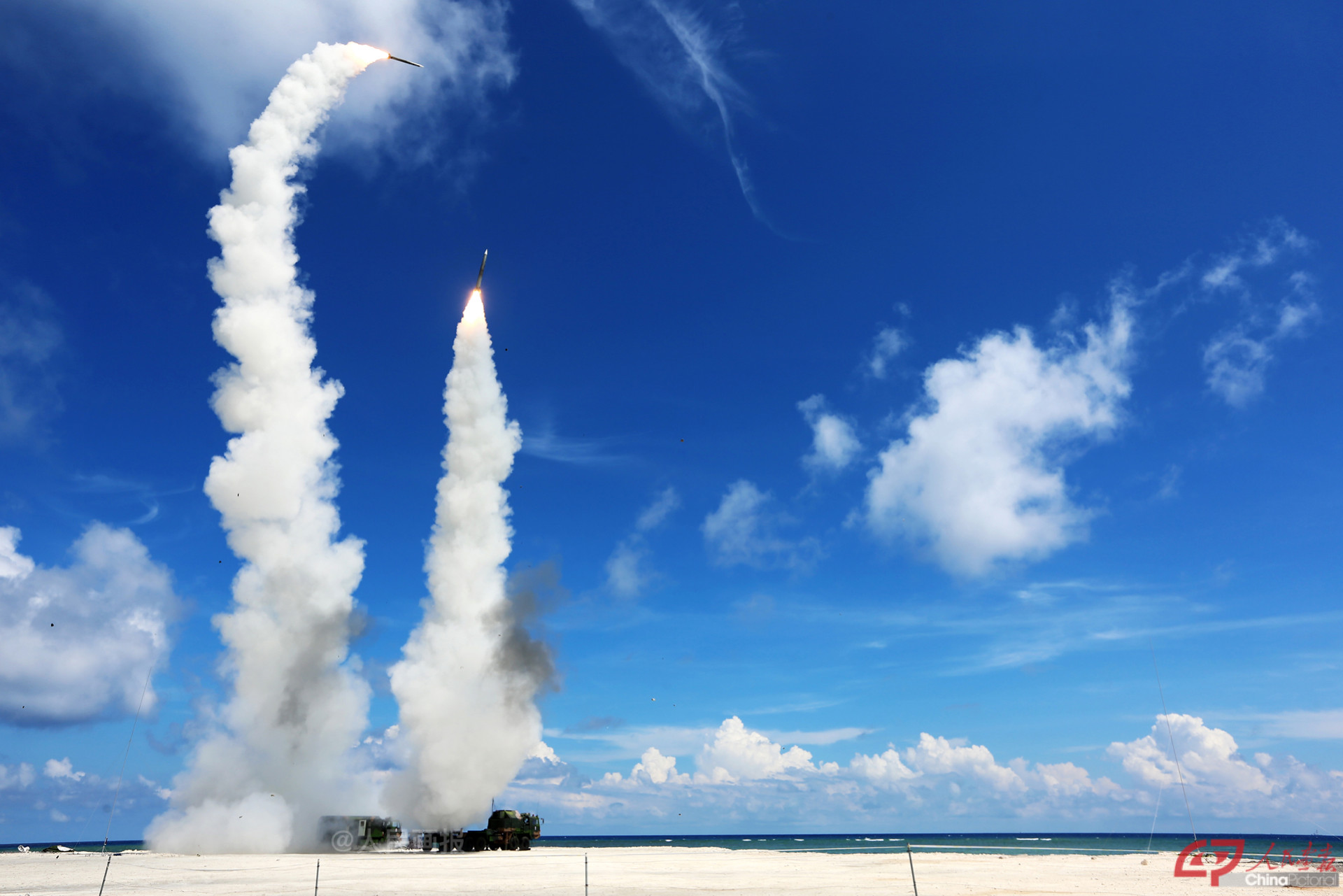You are using an out of date browser. It may not display this or other websites correctly.
You should upgrade or use an alternative browser.
You should upgrade or use an alternative browser.
PLA Anti-Air Missile (SAM) systems
- Thread starter FORBIN
- Start date
Isn't the HQ-17 already an ideal solution for short range air defense? It seems like a pretty incredible all in one system, mobile, no need for complex logisticsDoubt it's a Pantsir copy. PLA doesn't operate any Pantsirs and have not bought any. So if anything it's another short range air defence system. You can't copy what potentially makes a system more effective without owning it, operating it, and understanding it. I don't think the Pantsir is special in any way. The equipment isn't infallible, the missiles are groundbreaking but they are certainly better than what everyone else has for short ranges (two staged and probably more optimised performance). It's just a good modern gun + missiles combo all mobile unit complete with all the sensors required to perform AD.
PL-10 SAM is way too antiquated and a crappy missile even by past standards. HQ-7 is decent but a modernised short range AD that could serve in a similar role as Pantsir does, would probably need to be based off more modern missiles. There is the ground based PL-12 and extended range missile. There's the "new" triple 5 missile for the navy but all of those are more mid range and bulkier. I can see an HQ-7 replacement be based on a new missile. Possibly one that is two staged and cheap enough to manufacture in numbers like Pantsir's. That's the only part I suppose would be following Pantsir.
By the way, does anyone know how target acquisition works for HQ-10? Is it a self-contained system or does it require external radars?
Last edited:
Isn't the HQ-17 already an ideal solution for short range air defense? It seems like a pretty incredible all in one system, mobile, no need for complex logistics
By the way, does anyone know how target acquisition works for HQ-10? Is it a self-contained system or does it require external radars?
Yeah the HQ-17 is pretty much as good as a short range and point defense SAM gets. It's older variants are basically Tor-M1 reverse engineered from the 1990s export version. More modernised HQ-17 started branching off from that 1990s Tor-M1 but I doubt the PLA and the institutes that worked on reverse engineering Tor-M1 spent as much effort as the Russians in modernising their own, when comparing the latest HQ-17 and the latest Tor missile system. The main differences I imagine would be in how their electronics and radars developed in the last 20 odd years.
I can't think of another SAM system that has similar combination of "self reliance" (a Soviet and Russian emphasis that is much appreciated obviously by the Chinese) along with the same level of speed (Mach 3) and range of targets it is designed to engage. Pantsir's missile has slightly superior range and much superior speed but the vehicle makes it slightly less mobile compared to Tor. Though Pantsir is designed to be a mobile point defense system while the Tor is more for accompanying and moving with troops with a lot more flexibility than Pantsir. The paper specs and performance are world leading in this niche category but SAMs are always reacting to activity so they're far from infallible which explains the Pantsir's supposed "poor" performance in combat. In reality, I doubt any alternative SAM could do better in similar positions and situations. So yeah these are sort of the best solutions for short range air defense. My old post was basically to make the point that there is hardly a need for a Pantsir equivalent in PLA. They have HQ-17 which covers the same tasks only with added mobility. There's the older HQ-7A and despite having completed and produced multiple types of short and medium ranged SAMs built on A2A missile platforms, none of those were really fielded in numbers because they aren't as capable as modernised HQ-16s and I suppose that the PLA also don't see that much need to cover the ranges between the HQ-16 and the HQ-17/HQ-7. Maybe they're waiting for the quad packable (on 055) triple 5 missile which sits in this empty range envelope that's only fillable now with the rejected PL-12 based SAM.
HQ-10 is a naval point defense SAM with even less range than HQ-17 and HQ-7. I don't think there is a land based HQ-10... just the HHQ-10 and the FL-3000. I think it's infrared only and only designed to intercept ordinance since it doesn't really have the range to shoot any larger vehicle. The HHQ-10 is also integrated with the ship so I imagine it's simply directed and fired at incoming missiles/bombs in a fire and forget fashion with the IIR taking over once released. It serves a very different purpose since HQ-17 and HQ-7 are there to also engage helicopters and UAVs or larger vehicles that get into range. They probably also have better warheads for those tasks than HQ-10. Both Tor/HQ-17 and HQ-7 missiles seems to accommodate larger warheads than missiles like the two stage Panstir 57E6 and HQ-10. Both of those look like they have no warhead or very slight ones, depending mostly on KE to deflect or destroy targets. Tor's look like it can easily accommodate fuse detonation shrapnel cones.
Last edited:
Yeah the HQ-17 is pretty much as good as a short range and point defense SAM gets. It's older variants are basically Tor-M1 reverse engineered from the 1990s export version. More modernised HQ-17 started branching off from that 1990s Tor-M1 but I doubt the PLA and the institutes that worked on reverse engineering Tor-M1 spent as much effort as the Russians in modernising their own, when comparing the latest HQ-17 and the latest Tor missile system. The main differences I imagine would be in how their electronics and radars developed in the last 20 odd years.
I can't think of another SAM system that has similar combination of "self reliance" (a Soviet and Russian emphasis that is much appreciated obviously by the Chinese) along with the same level of speed (Mach 3) and range of targets it is designed to engage. Pantsir's missile has slightly superior range and much superior speed but the vehicle makes it slightly less mobile compared to Tor. Though Pantsir is designed to be a mobile point defense system while the Tor is more for accompanying and moving with troops with a lot more flexibility than Pantsir. The paper specs and performance are world leading in this niche category but SAMs are always reacting to activity so they're far from infallible which explains the Pantsir's supposed "poor" performance in combat. In reality, I doubt any alternative SAM could do better in similar positions and situations. So yeah these are sort of the best solutions for short range air defense. My old post was basically to make the point that there is hardly a need for a Pantsir equivalent in PLA. They have HQ-17 which covers the same tasks only with added mobility. There's the older HQ-7A and despite having completed and produced multiple types of short and medium ranged SAMs built on A2A missile platforms, none of those were really fielded in numbers because they aren't as capable as modernised HQ-16s and I suppose that the PLA also don't see that much need to cover the ranges between the HQ-16 and the HQ-17/HQ-7. Maybe they're waiting for the quad packable (on 055) triple 5 missile which sits in this empty range envelope that's only fillable now with the rejected PL-12 based SAM.
HQ-10 is a naval point defense SAM with even less range than HQ-17 and HQ-7. I don't think there is a land based HQ-10... just the HHQ-10 and the FL-3000. I think it's infrared only and only designed to intercept ordinance since it doesn't really have the range to shoot any larger vehicle. The HHQ-10 is also integrated with the ship so I imagine it's simply directed and fired at incoming missiles/bombs in a fire and forget fashion with the IIR taking over once released. It serves a very different purpose since HQ-17 and HQ-7 are there to also engage helicopters and UAVs or larger vehicles that get into range. They probably also have better warheads for those tasks than HQ-10. Both Tor/HQ-17 and HQ-7 missiles seems to accommodate larger warheads than missiles like the two stage Panstir 57E6 and HQ-10. Both of those look like they have no warhead or very slight ones, depending mostly on KE to deflect or destroy targets. Tor's look like it can easily accommodate fuse detonation shrapnel cones.
I have to disagree with regards to HQ-17. HQ-17 is likely to have a better radar than the latest Tor-M1. Call it AESA vs. PESA when it comes to the fire control radar.

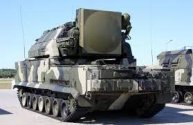
As for the HHQ-10, both and FL-3000N have these double prongs on the head.
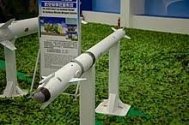
That's for passive RF homing, in addition to IR homing. The two prongs are used to compare the radar signals on each other as the missile rotates. Its exactly a conceptual copy of RAM, even if the electronics inside are made of different and locally sourced components. RAM does have a IR only version, but I have yet to see that on the HHQ-10.
So it uses the shipborne radar? Does anyone know which one specifically?As for the HHQ-10, both and FL-3000N have these double prongs on the head.
View attachment 71309
That's for passive RF homing, in addition to IR homing. The two prongs are used to compare the radar signals on each other as the missile rotates. Its exactly a conceptual copy of RAM, even if the electronics inside are made of different and locally sourced components. RAM does have a IR only version, but I have yet to see that on the HHQ-10.
So it uses the shipborne radar? Does anyone know which one specifically?
To be more precise it needs to use the radar to find the target and has the launcher and the missile's seeker aimed at it. It also needs the ESM to pick up the threat missile's radar, identify its frequency and its waveform, sends a copy to the missile's passive RF seeker. Metaphorically, that's like giving the hunting dog a sample of its prey's scent, and pointing for the dog where the prey went.
Any fast tracking radar can do this job. The one that specifically does this for most ships is the Type 364 radar. It is used with ships with and without the HQ-10, since it also queues the gun CIWS towards the targets.
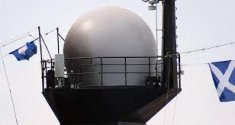
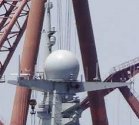
On other ships, like the Type 056 corvettes, it uses this radar.
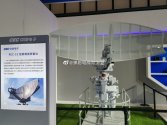
Both these radars --- they are related, the one on the bottom may have the PLAN name Type 363 --- are optimized for scanning and tracking airborne targets flying near the water's surface. For this to happen, you must have good sea clutter rejection ability.
For the ESM, it uses the Type 726-1/2 ESM, and on the 056, the Type 726-5 ESM. These units are attached to the mast on branches left and right, and also on the mast behind the radar.
Here are the ones on the Type 075.
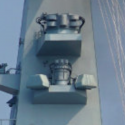
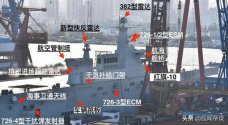
On the 052D.
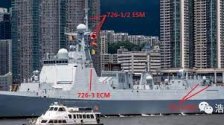
Last edited:
Isn't the HQ-17 already an ideal solution for short range air defense? It seems like a pretty incredible all in one system, mobile, no need for complex logistics
By the way, does anyone know how target acquisition works for HQ-10? Is it a self-contained system or does it require external radars?
HQ-17/Tor-M1 is a masterpiece. There was an exercise where a Tor-M1 vehicle was placed on the helo deck of a frigate, possibly the Admiral Gorshkov. The exercise has antiship missiles fired towards the frigate. The Tor-M1 vehicle on the helo deck acquired the targets and popped them out of the sky. I am in a biased opinion that these two systems are the best SHORAD out there right now.
Let's say if you develop an HQ-10 for land use.
Let's simplify the system by deleting the two horns and the passive RF homer. For the weight of all that, you have deleted, let's trade it for an increase in warhead weight.
Unlike the HQ-17, the HQ-10 can't be launched off vertically. You have to launch it off from a slant on a back of a truck, like the HQ-6. It would probably work within the context of an HQ-6 battery. Another way is to mount the Type 730 CIWS on a truck, thus the CIWS supplies its own radar. The HQ-10 can be mounted along the sides of the CIWS, ala Kashtan style. So you have a unit that combines gun and missile.
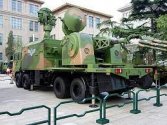
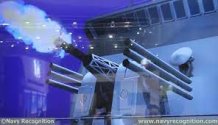
Has there been any development on newer and more compact missiles for HQ-17/17A? We know that Russia's Tor-M2 has the option to use the new and compact 9M338 missiles, increasing missile capacity from 8 to 16. Would love if HQ-17/17A gets that capability.

